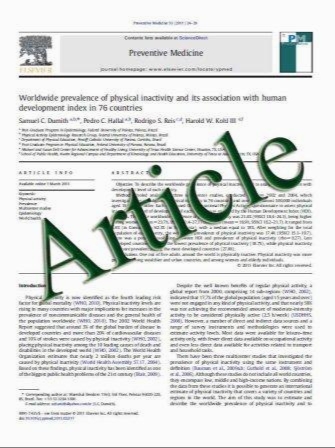Quantitative ultrasound and radiographic absorptiometry are associated with vertebral deformity in Japanese Women: the Hizen–Oshima study
- نوع فایل : کتاب
- زبان : انگلیسی
- مؤلف : Y. Abe & N. Takamura & Z. Ye & M. Tomita & M. Osaki & Y. Kusano & T. Nakamura & K. Aoyagi & S. Honda
- چاپ و سال / کشور: 2010
Description
Summary We evaluated the ability of heel quantitative ultrasound (QUS) and metacarpal radiographic absorptiometry (RA) to identify subjects with vertebral deformities in Japanese women aged .40. Both QUS and RA were associated with vertebral deformities, and the estimated prevalence at each T-score widely varied with age. Introduction Heel QUS and metacarpal RA have been used for screening patients to evaluate risk of osteoporotic fractures. The aim of this study was to evaluate the ability of QUS and RA to identify women with vertebral deformities in 570 Japanesewomen aged .40, and to estimate the prevalence of vertebral deformity at each T-score. Methods Calcaneal QUS and metacarpal RA were performed. Radiographic vertebral deformities were assessed by quantitative morphometry, defined as vertebral heights more than 3 SD below the normal mean. Results The receiver operating characteristic analysis showed that both calcaneal stiffness index (SI) and metacarpal bone mineral density (BMD) were associated with vertebral deformities. Using the T-score of .2.5 as a cutoff value, the specificity and sensitivity for identifying individuals with vertebral deformities was 65% and 83% for calcaneal SI, and 40% and 88% for metacarpal BMD, respectively. The prevalence of vertebral deformity was estimated using age-adjusted logistic regression models. Women with calcaneal SI T-score of .2.5 had a 2% estimated probability of vertebral deformity at age 40, and 22% at age 80. For metacarpal BMD T-score of .2.5, estimated probability was less than 1% at age 40, and 27% at age 80. Conclusion Both calcaneal SI and metacarpal BMD were associated with prevalence of vertebral deformity. Furthermore, the prevalence widely varied with age at any given bone value.
Osteoporos Int (2011) 22:1167–1173 DOI 10.1007/s00198-010-1295-1 Received: 12 August 2009 / Accepted: 19 April 2010 / Published online: 29 June 2010


